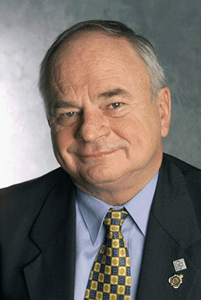
| Have a Question? Provide Feedback? | Submit | Search Our Site: |
|
|
THE ONLY 9TH BATTERY GUNNER KILLED AT GALLIPOLI 2027 GUNNER ATHOL WYNNE PARRY |
|||||||||||||||||||||||||||||||||||||||||||||||||||||||
| “ God help me, I was only 19” John Schumann of Redgum 1983 | |||||||||||||||||||||||||||||||||||||||||||||||||||||||
|
|||||||||||||||||||||||||||||||||||||||||||||||||||||||
| The Ammunition Column sailed from Melbourne on 17 September 1914 aboard HMAT Geelong, joining the HMAT Katuna and the Tasmanian AIF contingent (including the 9th Battery) in Hobart. With his cousins Guy Briggs,5 a corporal and Charles Lee 6, both in the 12th Battalion, he left Hobart on 20 September 1914. With the remainder of the 1st AIF including his older brother Cyril, who had been posted to the Divisional Cash Office, he sailed from Albany in Western Australia for service overseas. Intensive training in the Egyptian desert preceded Gallipoli. Conditions were demanding. As one officer wrote: “... heat and blinding sandstorms. My eyes were all silted up and my mouth so parched that I often lost the power of speech.7 Gunnery training, deployments and live firing occupied the three field artillery brigades of the Division. Marches with the divisional and brigade ammunition columns, water carts, general service wagons including each battery of four guns in ‘column of route’ would stretch some five kilometres across the desert. In down time, however, Athol was able share the sights of Egypt with his brother and their mates. Cyril records that he would be taken to the gun line where Athol would show off the 9th Battery’s 18 pounder gun: “He would walk around it, patted it as though it were an animal. He knew every bolt and screw.8 As with his fellow ANZACs he would have contemplated what may lie ahead; writing home: “You can depend on me doing my duty bravely, and as a soldier should be”. Again, he wrote: “I will do my best and I am sure God will guide me”. He was regarded as “a good and game lad.9. Following the Gallipoli landing, Gnr Parry was back on the gun-line. The 9th Battery’s were detailed for various tasks until with the help of over 100 infantrymen they were able to drag each gun up the cliffs to their eventual platform on the heights above the 3rd Brigade positions on the right flank of the ANZAC position. In the interim they provided respite from the constant action for the 7th and 8th Battery’s gunners. These positions were well forward and under constant fire. Otterman artillery high explosive and shrapnel fire was complemented by small arms and sniper fire. Casualties were constant. On 11 May 1915 the 9th Battery gunners were relieving the 8th Battery in the vicinity of Lone Pine. Parry was sitting on No 4 gun layers seat chatting with Sgt McKenzie, the gun sergeant on No 3 gun. Suddenly, with an ‘agonising cry’ he fell forward mid-sentence into the sergeant’s arms, mortally wounded from a sniper’s bullet.10 |
|||||||||||||||||||||||||||||||||||||||||||||||||||||||
|
|||||||||||||||||||||||||||||||||||||||||||||||||||||||
| Gnr Parry was the first member of the 9th Battery to be killed and the only member killed at Gallipoli. He was initially buried in a temporary grave prior to a more formal site at “Browns Dip” behind the gun position at the head of Artillery Road. Throughout the remainder of the campaign his fellow gunners would visit his grave in quiet times sitting with him for a “quiet pipe” (smoke). Following the war, Gnr Parry was reinterred at the Lone Pine Cemetery. |
|||||||||||||||||||||||||||||||||||||||||||||||||||||||
| Contributed by Mark Cameron with additional family information from Marion Sargent and Stephen Cornish. | |||||||||||||||||||||||||||||||||||||||||||||||||||||||
1 Launceston Volunteer Artillery (LVA) sponsored cadets from 1890, an initiative of Lt Col Alfred Harrop, Commanding Officer and prominent Launceston Merchant. The Launceston Church Grammar School Cadet unit had been raised in 1896 under the auspices of the LVA by Lt H Gillett. 5Cpl Briggs was deemed killed in action on the 28 April 1915 at the first 12th Battalion roll call following the ANZAC landing held on the 29 April 1915. 10 The Diary of W G McKenzie; entry 11th May 1915; unpublished. |
|||||||||||||||||||||||||||||||||||||||||||||||||||||||










